Featured, News
Digital Signage, Information Technology and the Audio Visual Industry
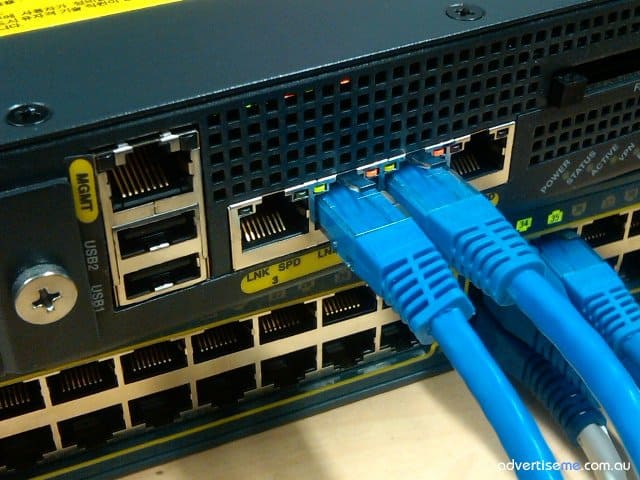
Advertise Me has been in the digital signage industry since its infancy in Australia and we’ve experienced the convergence of the Information Technology and Audio Visual industry. Both are now becoming so dependent on each other that professionals in the IT industry are learning skills from the audio visual industry and vice versa.
What are the main reasons behind this and which industry does digital signage fit in?
In this particular post I will attempt to explore these areas and hopefully others can follow and join me with sharing their thoughts and ideas on this particular topic.
Let’s firstly look at the roles and responsibilities of both industries:
The IT industry
Generally speaking, when someone uses the term IT (Information Technology), the first thing that comes to their mind is computers – basically this is what the majority of digital signage players are (embedded computers, laptops, desktops, Macs etc). One thing that needs to be clarified is that IT encompasses much more than computers, it covers broader areas such as software development, desktop management, server management (Windows, Linux, Mac, etc), network infrastructure, security and helpdesk support. All of these areas form the basic foundation of the IT backbone and digital signage is one of those technologies which have a great dependency on the IT framework. The design, stability of the overall IT infrastructure needs to work in order for the digital signage network to also be reliable and efficient.
Let’s look at a few of these areas starting with Network infrastructure. The network infrastructure covers equipment such as Routers, Switchers and Firewalls which allows information to transverse between computers and devices. From my shallow understanding and for simplicity purposes, switches are used to connect Local Area Networks and routers are devices which connect Wide Area Networks together or allow connectivity to the Internet. In most cases, digital signage networks will span across multiple WANs and LANs and is used to monitor, manage and schedule content to disperse sites. Firewalls are used to prevent unauthorized access to the network. These devices have access control lists which define who can connect to the network and what they can connect to.
Here’s a quick example of a typical digital signage network:
One of the most critical factors for having an efficient network is speed and bandwidth between end to end devices. This means that when deploying your digital signage solution you must analyse the requirements and determine what the minimum speed your network must support. If you’re looking at streaming your high resolution content to the digital signage players from your head office, I would suggest that you subscribe to the fastest speed available in your country – obviously all this comes with a price but you can leverage this by using additional services like VoIP, CCTV, wireless hotspots etc. If you’re a techie, you may consider implementing Quality of Service on your network especially if you’re streaming your content. This will allow you to prioritise and reserve enough bandwidth on your network so there are no streaming delays.
Let’s move on and talk about the Software component. No matter which type of solution you’re using, you’re definitely going to use a piece of software that a company has developed. The programming language and technology used to develop this software will vary but what is common between all the digital signage software tools is the ability for someone to manage and schedule content. From experience, there are quite a number of software tools out in the market and when determining which piece of software is best suited to your requirements ask yourself these questions:
- What operating system will I be using? (Windows XP, Windows Embedded, Linux, Mac OS)
- What are the minimum hardware requirements? (Memory, CPU, Video Card)
- What features do I need e.g ability to support RSS feeds, Live TV, streaming video, display websites etc?
- How much budget do I have?
- Is there a cost for additional support and maintenance?
- What is the frequency of software patches?
- Can I easily obtain support from the company?
- How intuitive is the system?
When dealing with the software company, make sure that they are able to provide you with the necessary support in the event a bug is found. You don’t want to wait around for a year for the software company to resolve the issue.
Let’s keep moving forward and talk about the digital signage hardware -indeed these can range from computers to laptops or from small embedded devices to high end servers. The current trend that I’ve seen when using digital signage players is that they are becoming smaller and more environmentally friendly. Here’s another set of questions you should ask yourself before making that final purchasing decision:
- What technical specs do I require in order to run the digital signage software? (Operating System, Hardware requirements)
- What types of video ports do I need to connect to my screen? (e.g S-Video, VGA, DVI, HDMI, Composite, Component)
- What screen resolution will I be outputting to the screen?
- How long is the warranty and what does it cover?
- Does the hardware need to be mounted behind the screens or are they going into a rack?
So there you have it, that’s a brief summary of the IT industry.
The Audio Visual Industry
This industry has been around longer than the IT industry. Since the early days of the black and white televisions, the industry has grown exponentially. This industry is all about what we see and what we hear – its about tweaking and refining two of our sense (visual and audio). The visual component has now evolved to also provide the viewer with a means to interact with the medium by using technology such as touch screens.
Typically, the audio equipment consists of speakers, audio input devices (CD player, audio from a DVD player, digital signage, mobile phones) and an AMP (to amplify the audio). When installing any audio system you should consider the following:
- What will be the audio input device?
- What are the speaker requirements? 1 or 2 channels?
- How will the speakers be connected to the audio input device?
- Is an amplifier required?
- Is a zone control device required? (this is a device to switch audio to speakers located in different zones/areas).
- What type of wiring will be used? Avoid installing power cabling, audio and network cabling together as this may introduce noise
- Speaker layout – determine the best locations for installing speakers whether on the ceiling or against the wall
It is human nature to be attracted to beautiful and appealing images and the medium which presents these images must be able to leverage this requirement. There are various types of screen technologies in the current market and this includes, LCD, Plasma, LED, DID, projectors, touch screens and even steam. Generally the bigger the screens and the better the quality, the more expensive it gets. The only limitation we’ve come across is that the screen is only capable of display the resolution the player or connected device is outputting. This was talked about in a previous post called Screen Dilemma. When thinking about installing the screen, location is very important. We talked about this in previous post called Digital Signage: Location, Location, Location. Basically, the screen is more profitable when there are more people looking at the screen.
Before purchasing a display screen, you should consider the following:
- What types of video connectors does the digital signage support and does the screen support this? (e.g S-Video, VGA, DVI, HDMI, Composite, Component)
- What screen orientation do I need? (landscape or portrait)
- What screen resolution will I be outputting from the player and will the screen support this? NOTE: We have noticed that some residential screens do not support some of the screen resolutions we needed.
- What is the warranty period?
- Do I require speakers? (Some commercial screens do not come with speakers)
- Do I require the user to interact with the screen? (Touchscreen, sensors)
- Do I require power management features?
- Will the screen be installed in outdoor or indoor purposes?
- Will I need enclosures to protect the screen?
Avoid using residential screens and purchase commercial grade screens as these are designed for retail and commercial environments.
There are probably more points to consider and I look forward to hearing from all the visual and audio experts out there.
Digital Content
The majority of content that is produced will be created and edited by a computer. Also the application used to create or edit the content must have been developed by a computer to digitise the little bits (1’s and 0’s). In this day and age, everything is heading toward the digital world. Images, audio and video are now all in a digital format and this makes it easy for the content to be used for any digital signage installation. Having grown and seen these technological changes has been amazing. I still recall the days when scanners were first introduced in the market, and converting an image or document to a digital format was like pulling a rabbit out a hat – it was magic. And now, digital signage is riding this wave. The benefits of using digital signage are obvious and when the content can be easily supplied, created and moved across to different mediums.
There are several common tools used in the industry to create the digital content and these are:
- ASV4You – very affordable and easy to use tools for video, audio and image editing and for converting to different formats. We’ve actually used this software for most of our video and image editing.
“Register once and work with AVS4YOU Package which includes 28 audio& video software. AVS4YOU Software are designed to meet your most various tasks: Convert between all key audio and video formats; Rip DVDs and Videos; Edit home video and audio quickly; Apply effects, text and transitions to video and audio; Create video-DVDs with menus; Burn DVD/CD/Blu Ray; Copy videos to portables like iPod, iPhone, PSP, Zen, PS3, Xbox, Archos, phones, DVD/MPEG-4 players and portable media playes. All key video and audio formats are supported: HD Video (inc. AVCHD, MPEG-2 HD and WMV-HD), TOD, MOD, M2TS, AVI (DivX, XviD, etc.), MP4 (inc. Sony PSP and Apple iPod), WMV, 3GP, QuickTime (MOV, QT), SWF, DVD, VOB, VRO, MPEG 1, 2, 4, H.263, H.264, Real Video, DVR-MS, MKV, FLV; MP3, WAV, WMA, OGG, AAC, Vorbis, MP2, VOX, AAC, M4A, AMR and others. Subscribe to AVS4YOU Package for $59/lifetime and get All-In-One Software Bundle.”
It’s actually very affordable and they currently having a special on the Unlimited Subscription which you’ll be entitled to install all of their software package. Awesome bargain- order the Unlimited Subscription here: AVS4You Software
- Adobe Flash – create fancy animations
- Adobe Photoshop – create professional images
- 3D Max – create 3D animations
- Adobe Premier – used for video editing and productions
There’s quite a number of image and video editing application on the market and there are also some which may be open source as well – so before spending your hard earn dollars, I would recommend you test the open source applications first.
Project management
Both of these industries require the professional to be skilled in project management. To ensure the successful completion of either an IT or Audio Visual project, there are several tasks that is required from the professional. One of them is to have strong communication and writing skills but most importantly is being able to plan and assign tasks to your relevant resources. If the install is not planned correctly, it could potentially lead to scope creep.
Digital Signage
So after all that, which category should or does Digital Signage fall under… actually the way I see it, it covers both the IT and AV Industry. I don’t believe there is clear answer to this question but I’m more than happy to listen to your comments and maybe there is an answer out there.
The digital signage industry is a cut throat industry and people getting into the industry needs to be aware of all the areas that were covered above. Because of the scope and complexity of the digital signage industry, it is often best to partner with reliable and professional businesses – this is crucial if you want your business to survive and succeed. Good luck to those who are just starting out in this industry.
LIKE WHAT YOU'VE READ?
When you subscribe you will also join other Digital Signage readers who receive our content right in their mailbox. Good luck!



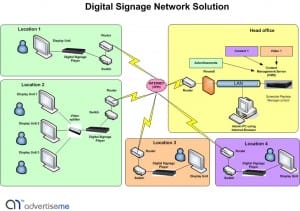

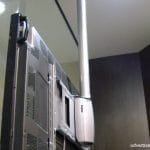


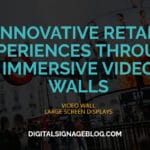


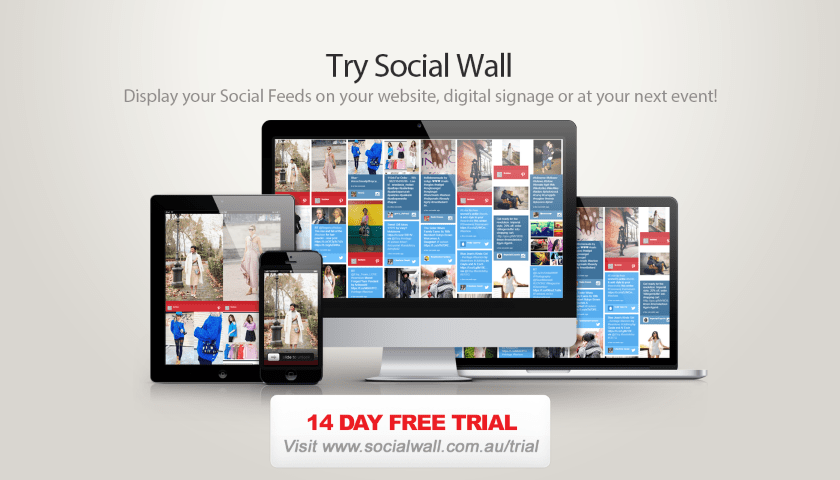
Comments (0)